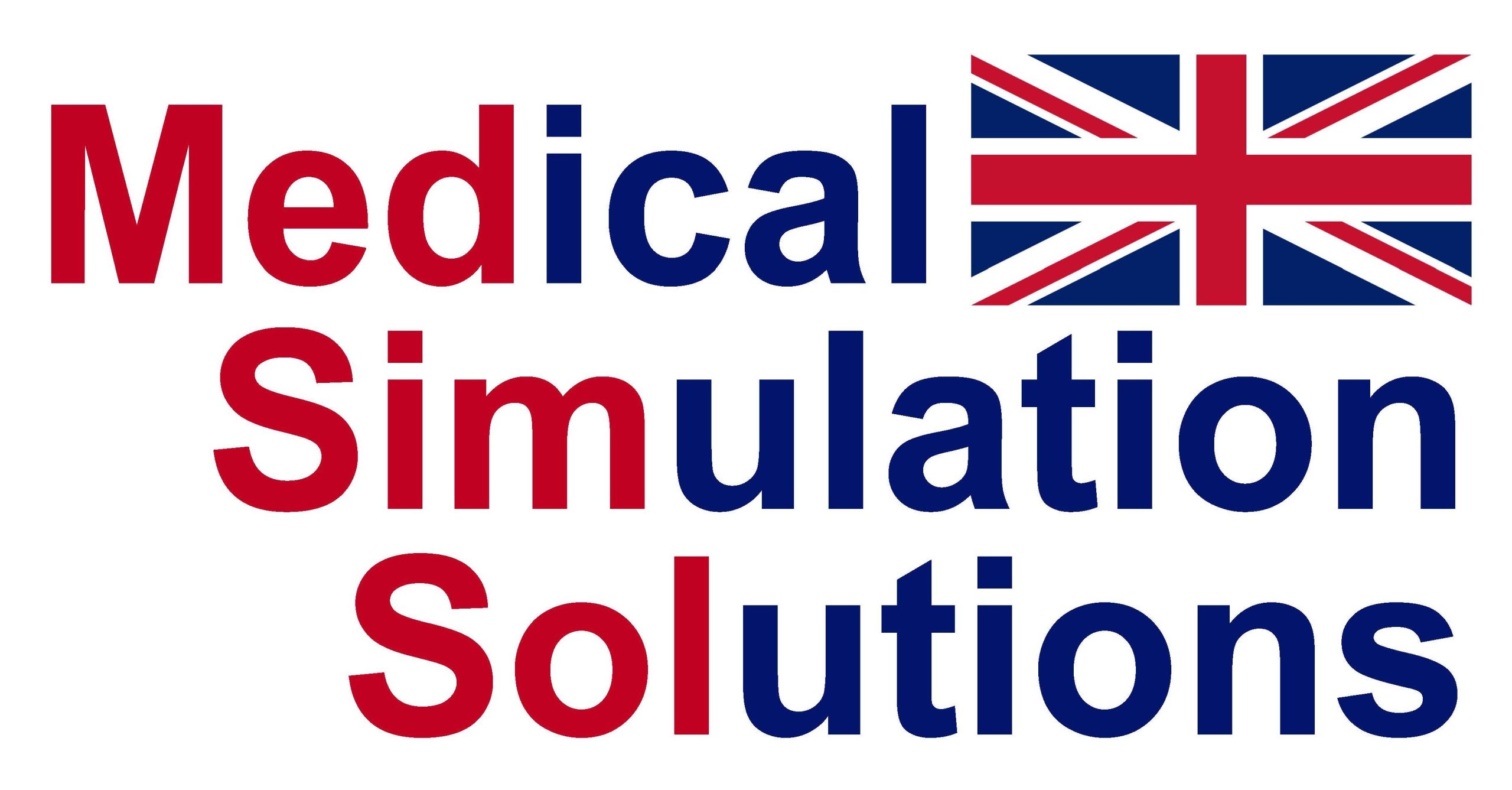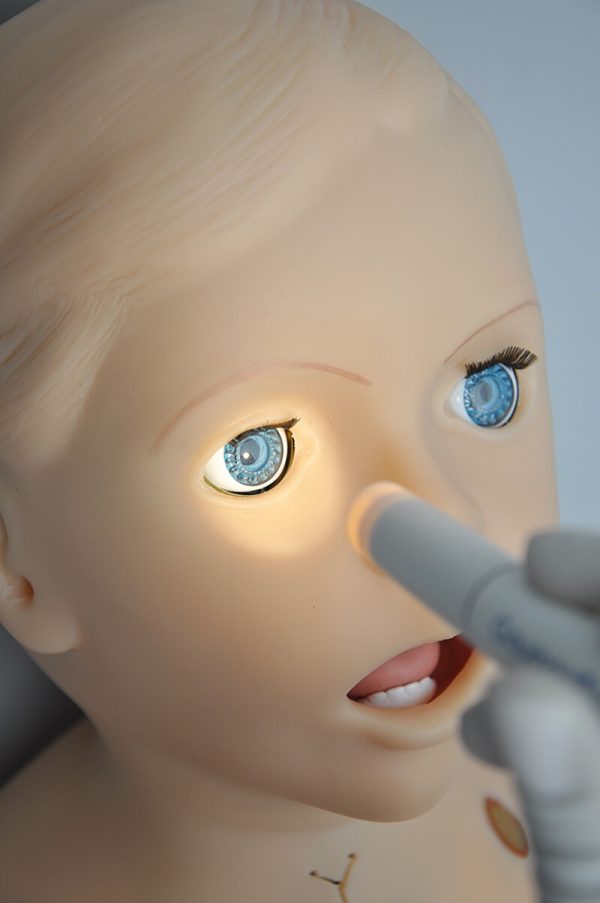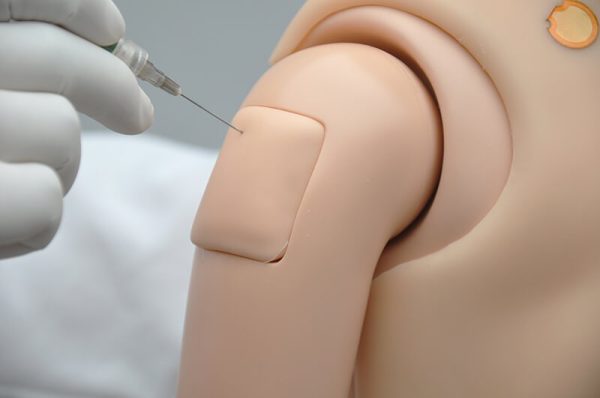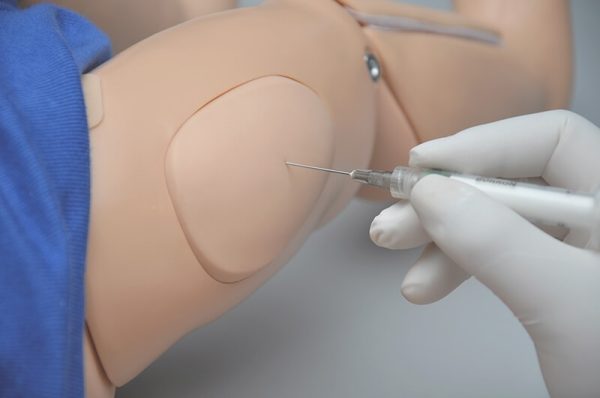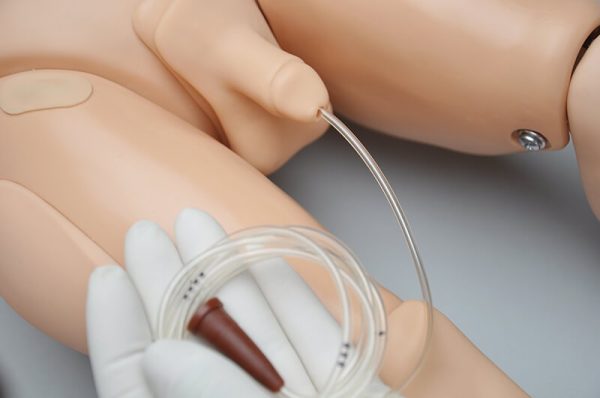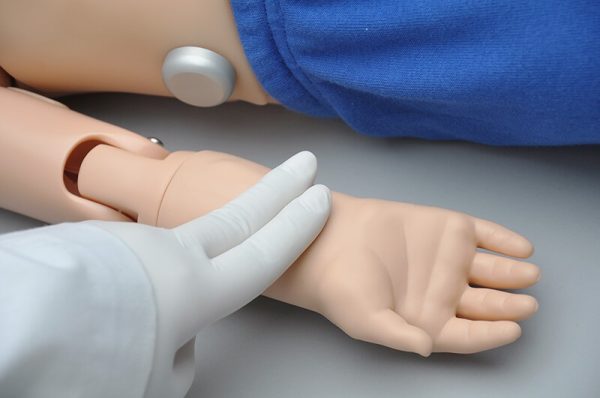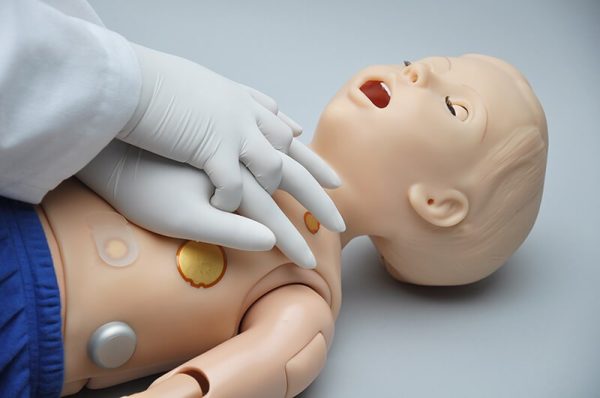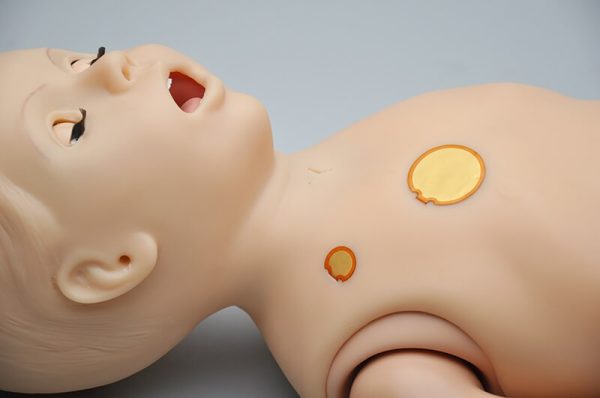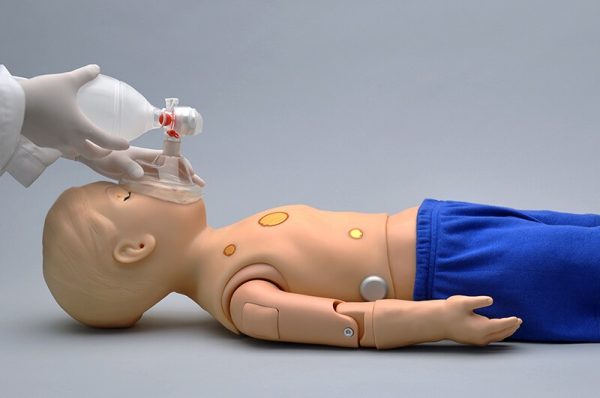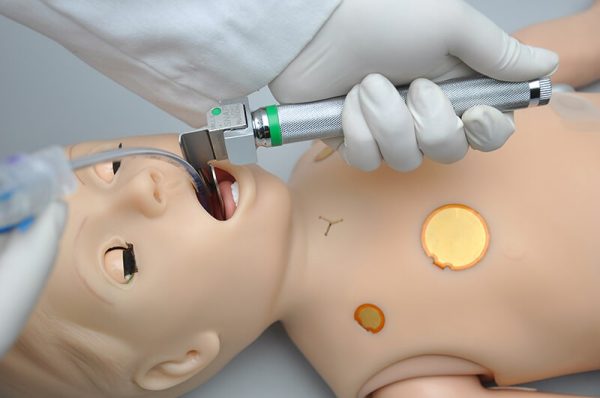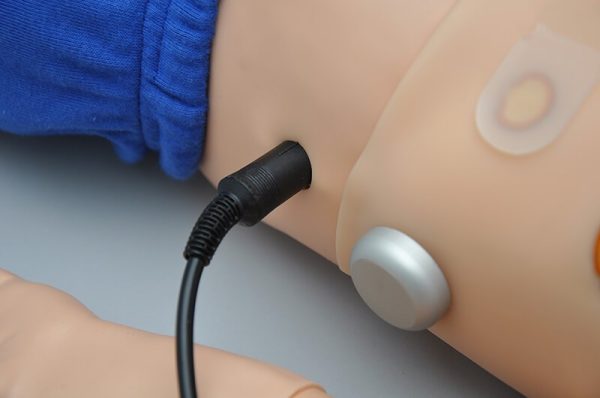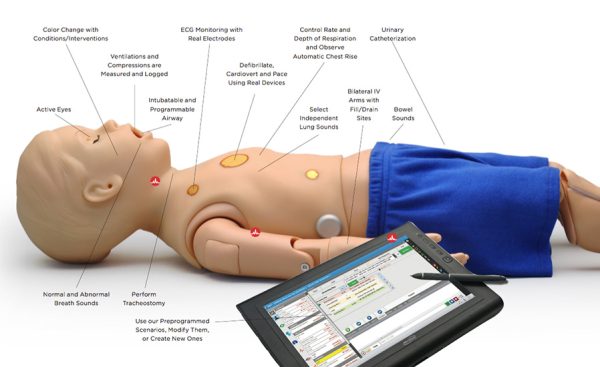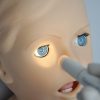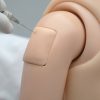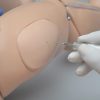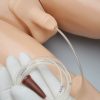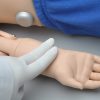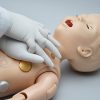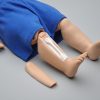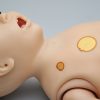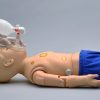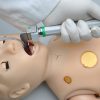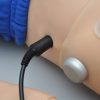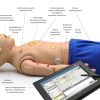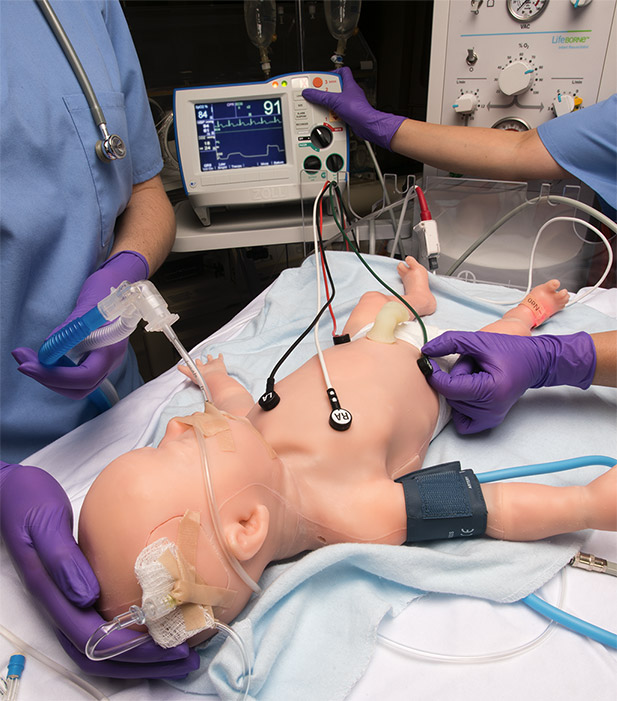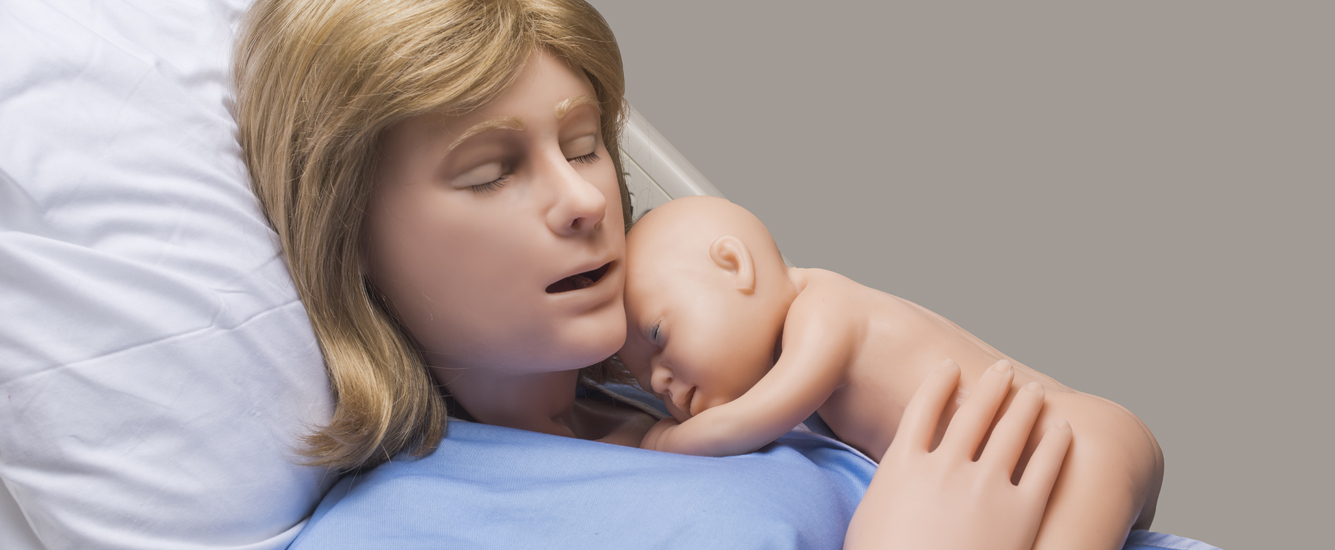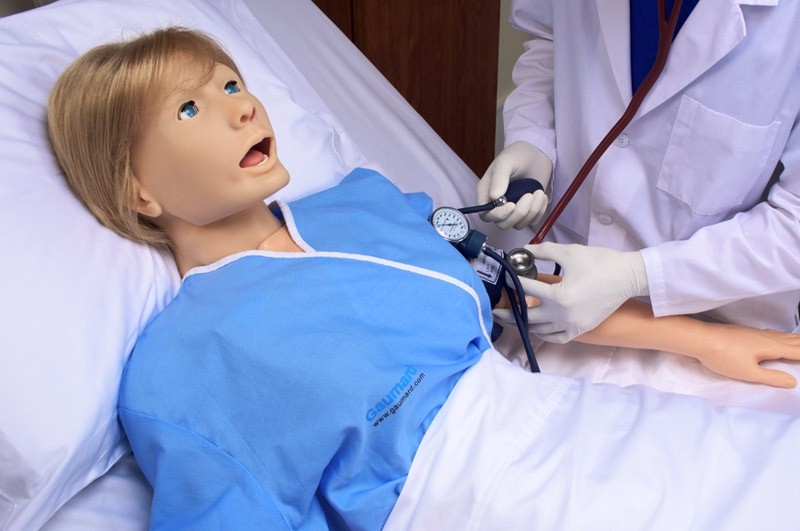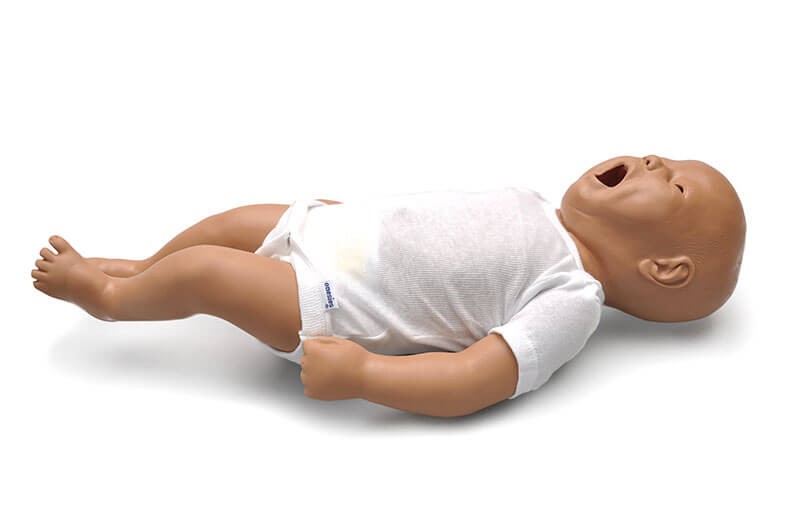Description
Features
- Available in ethnic skin tones
- Tetherless and fully responsive even while being transported
- Powered from an internal rechargeable battery or wall outlet
- Simulator receives commands from a wireless tablet PC and operate at distances up to 300 Ft. (100 m)
- Simulator can operate automatically using optional Automatic Mode or by the Instructor
- Training Guide with both basic and advanced interactive scenarios
- Use pre programmed scenarios, modify them or create your own quickly and easily
- Installation and training worldwide
- Simulation Made EasyTM
Airway
- Programmable airway
- Tongue edema
- Multiple upper airway sounds synchronized with breathing
- Nasal or oral intubation
- Right mainstem intubation
- Sensors detect depth of intubation
- Airway may be obstructed
- Block right lung, left lung, or both lungs
- Head tilt/ chin lift
- Suctioning techniques can be practiced
- Bag-Valve-Mask Ventilation
- Placement of conventional airway adjuncts
- Endotracheal intubation using conventional ETTs
- Retrograde intubation
- Sellick maneuver brings vocal cords into view
- Perform tracheostomy
- Tracheostomy care and suctioning
New Airway Features
- Realistic geometry and larger epiglottis. Better visualization of vocal cords as well as easy intubation
- Improved chest wall recoil during CPR
- Lung compliance refined to deliver chest rise when ventilating at 20cm H2O
Cardiac
- ECGs are generated in real time with physiologic variations never repeating textbook patterns
- Heart sounds may be auscultated and are synchronized with ECG
Breathing
- Control rate and depth of respiration and observe chest rise
- Automatic chest rise is synchronized with respiratory patterns
- Select independent left and right upper lung sounds
- Chest rise and lung sounds are synchronized with selectable breathing patterns
- Accommodates assisted ventilation including BVM and mechanical support
- Ventilations are measured and logged
- Gastric distension with excessive BVM ventilation
- Chest compressions generate palpable blood pressure wave form and ECG artifacts
- Detection and logging of ventilations and compressions
- Simulated spontaneous breathing
- Variable respiratory rates and inspiratory/expiratory ratios
- Bilateral chest rise and fall
- Unilateral chest rise simulates pneumothoraces
- Normal and abnormal breath sounds
Circulation
- Measure blood pressure by palpation or auscultation
- Use real modified BP cuff to measure blood pressure
- Korotkoff sounds audible between systolic and diastolic pressures
- Pulse sites synchronized with BP and heart rate
- Bilateral IV arms with fill/drain sites
- Realistic flashback
- SubQ and IM injection sites
- Intraosseous access at tibia
- Chest compressions are measured and logged
- ECG monitoring using real devices
- Defibrillate, cardiovert and pace using real devices
- Multiple heart sounds, rates and intensities
- ECG rhythms are generated in real time
- Heart sounds synchronized with ECG
- Dynamic rather than static 12 lead ECG display available with Automatic Mode
- Pacing may be practiced anteriorly to avoid having to roll the patient during delivery
- Bilateral carotid, radial, brachial and femoral pulses synchronized with ECG
- Pulses vary with blood pressure, are continuous and synchronized with the ECG even during a paced rhythm
Neural Responses
- Eyes are controlled automatically by physiologic model or directly by the Instructor
- Eyes open and close
- Select blink rate
- Select pupillary response to light
Speech
- Pre recorded sounds
- Optional wireless streaming audio
Articulation and Movement
- Seizure/convulsions
- Realistic rotation of the shoulder and hip joints
- Legs bend at the knees
- Supine or semi-recumbent positions
Other
- Central cyanosis
- Fill bladder and perform Foley catheterization
- Interchangeable genitalia
- Insert feeding tubes
- Remains fully functional even while in transit
- Bowel sounds
User Interface
- Sensors track student actions
- Changes in condition and care provided are time stamped and logged
- View the actions of up to 6 care providers using a responsive menu or write narrative
- Generate and share diagnostic lab results
- File sharing through Vital Signs Monitor
- Links with optional Pro+ recording and debriefing system integrating the event log with cameras and patient monitor
- Supplied with wireless tablet PC
- 12 pre programmed scenarios which can be modified by the instructor even during the scenario
- Create your own scenarios – add/edit
